
Adkins, Mattas, Mize Family History
Photo: North Dakota Historical Archives
Riverboat Days
Clippings from the Billings Gazette

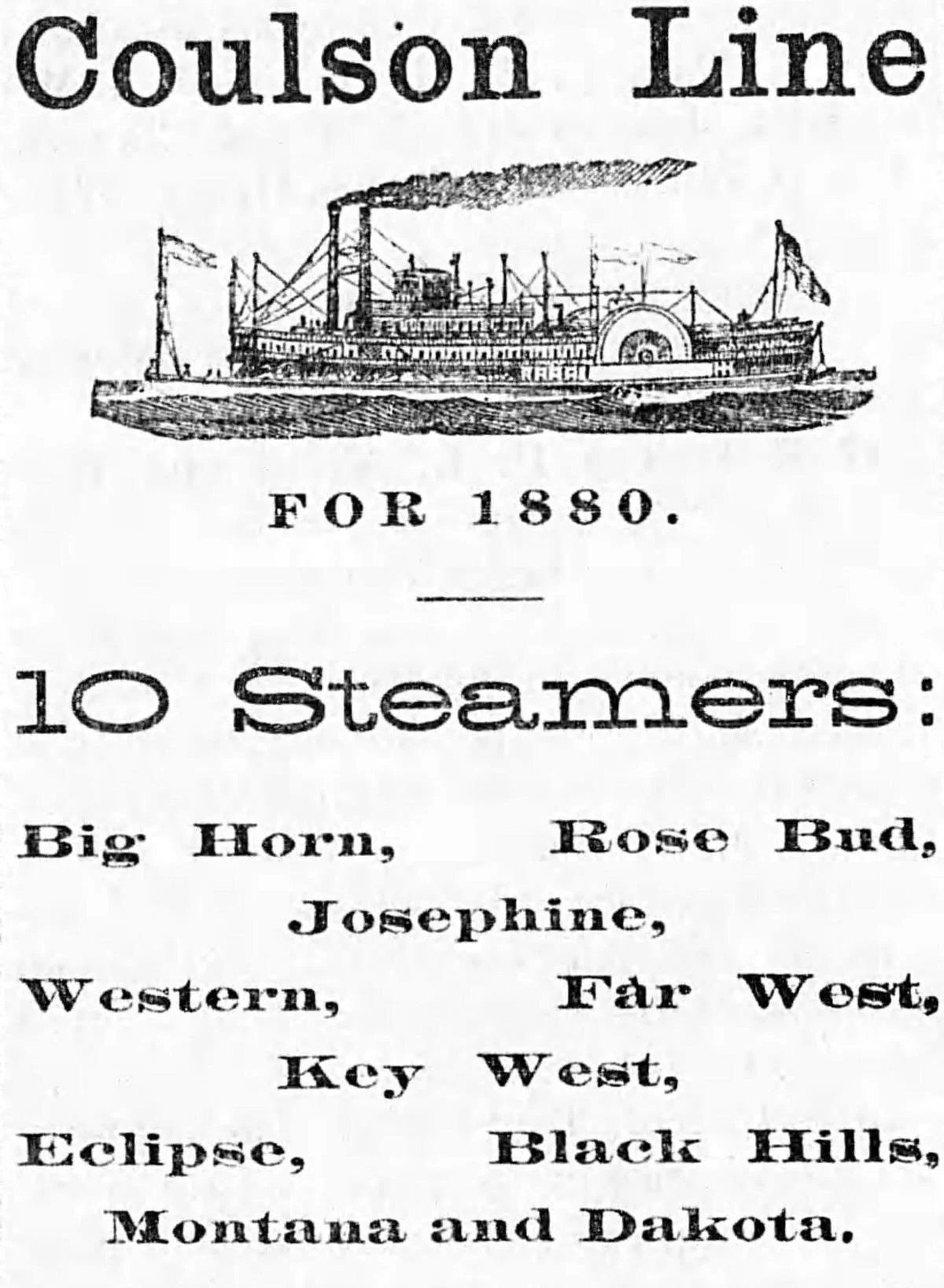
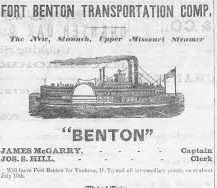
But navigating the river was essential to opening the “west,” first for the goldminers then to homesteaders. Companies like the Missouri River Transportation Company, owned by the Coulson Brothers in Yankton and the Benton and Baker Lines out of Bismark saw the opportunity to make a sizable profit in providing boats to carry goods of all types, including ammunition, Hotchkiss guns, and soldiers to Fort Benton in Montana Territory. During the heyday of the Montana Gold Rush, in a two year period 1867-1868 the steamboats carried approximately 24 million dollars’ worth of gold on their return trips down river.
Painting by Karl Bodmer. "Snags on the Missouri River and the Steamboat Yellowstone." Circa, 1880s
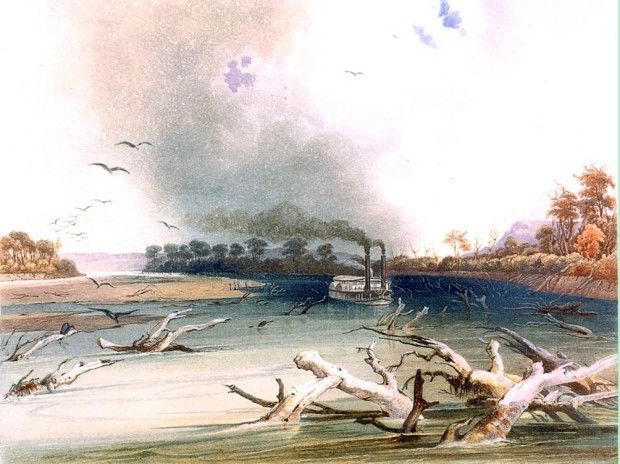
What exactly was a Missouri Riverboat? A vessel like no other! Designed and redesigned from boats that floated in the deep waters of east coast rivers, they became sleeker and lighter to adapt to the perils of the Missouri. Early pilots called the river “Misery,” too thick to drink and too thin to plow. Dead trees fell into it, ready to snag any unsuspecting boat. The current was furious and the channels constantly changing.
Missouri River 1880s. Photo South Dakota Archives.

Barney left behind a log book of his sales from Judith Landing and Gallatin in Montana Territory to some of the most famous Riverboats in the Missouri, as well as letters about his experiences including references to their captains.
Barney Adkins. Circa, 1880s
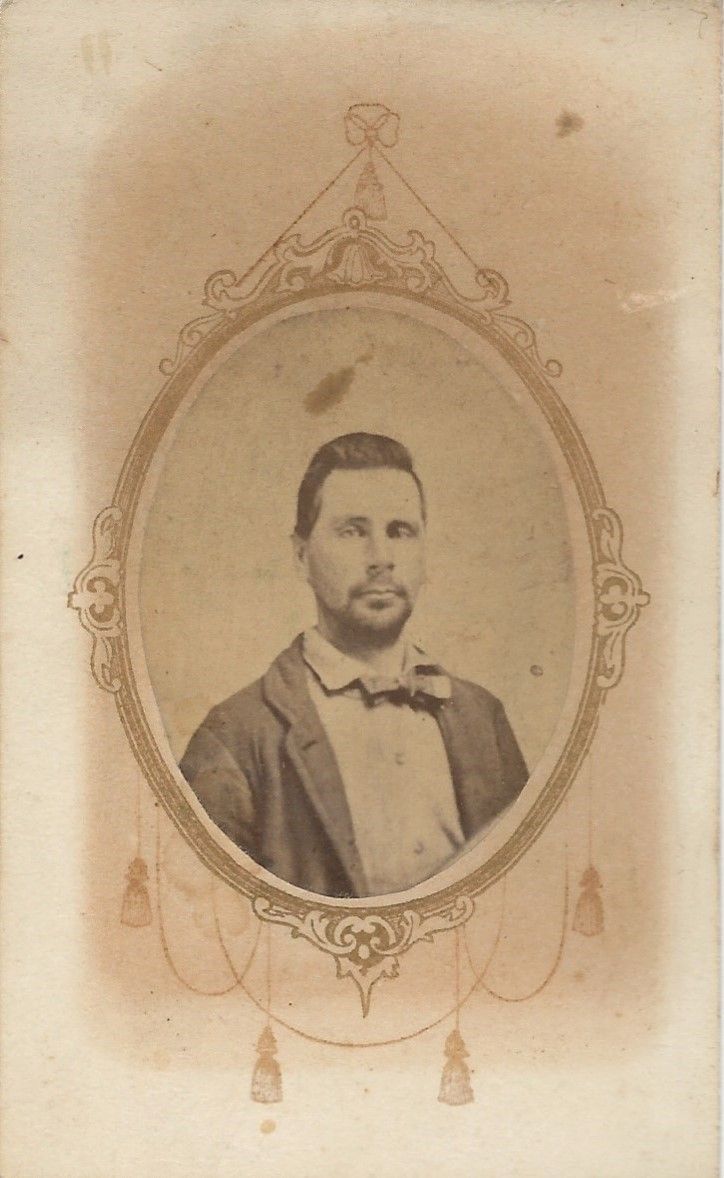
The boats were powered by steam fueled with cottonwoods growing along the banks of the Missouri. 1-2 cords of wood were needed per mile to feed their engines.
Without people like my great uncle Wallace Urbane Adkins (Barney) the riverboats that travelled from Yankton up the Missouri River into the Montana Territory between the 1870s and 1880s would not have made their historic journeys. He was a small cog, but an important one. A “wood hawk” by definition is a person who sold cottonwood to the riverboats. Barney was a wood hawk.
The boats were powered by steam fueled with cottonwoods growing along the banks of the Missouri. 1-2 cords of wood were needed per mile to feed their engines.
Without people like my great uncle Wallace Urbane Adkins (Barney) the riverboats that travelled from Yankton up the Missouri River into the Montana Territory between the 1870s and 1880s would not have made their historic journeys. He was a small cog, but an important one. A “wood hawk” by definition is a person who sold cottonwood to the riverboats.
Barney was a wood hawk.
Photos from the HJ King Collection. South Dakota Historical Archives.
Fort Benton Levee. Circa, 1870s. North Dakota Historical Society.

Fort Sully. Circa, 1898
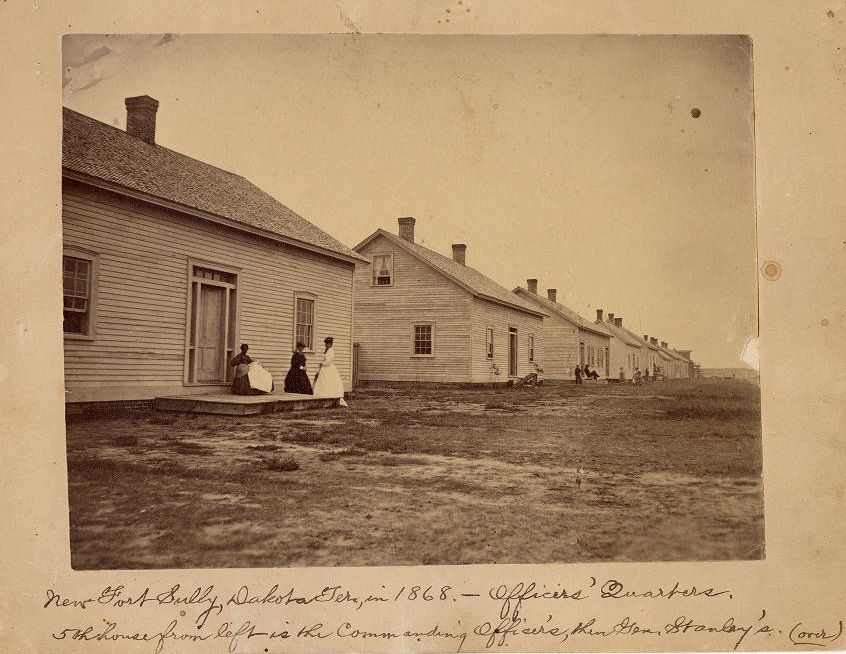

Running Water and Fort Benton, Dakota Territory. Circa, 1870s

At the age of nineteen, Barney had his first encounter with a riverboat. He, his brother Adelbert along with their father Levi Adkins left home in Wisconsin in 1867 for the gold fields. The trio, outfitted in Omaha took a riverboat to Yankton, Dakota Territory and then on to Montana to strike it rich!
They traveled through Running Water, past Fort Randall, then by Brule City, took on wood near the mouth of the Bad River, up to Fort Sully, on to Bismark, arriving at their destination - Fort Benton, Montana Territory.
As reported in the Daily Press and Dakotan newspaper, May of 1879 there was hefty riverboat traffic leaving Yankton to go up the Missouri.
Adelbert had enough of wood hawking in1883, took his money and left to find a homestead somewhere. There is no record of what Barney did with his, only that he stayed as a wood hawk.
Photo: "Gold Miming in Alder Gulch" by W.H. Jackson. Circa. 1871
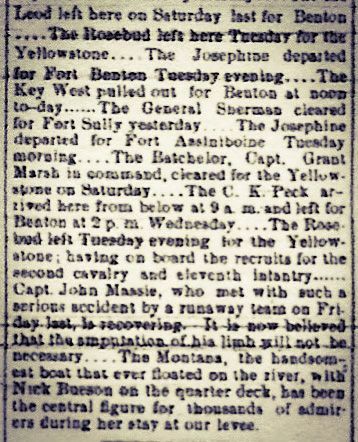
Judith Landing, Power family photo collection, Historic Montana. Circa, 1880s
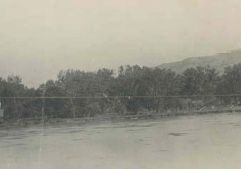
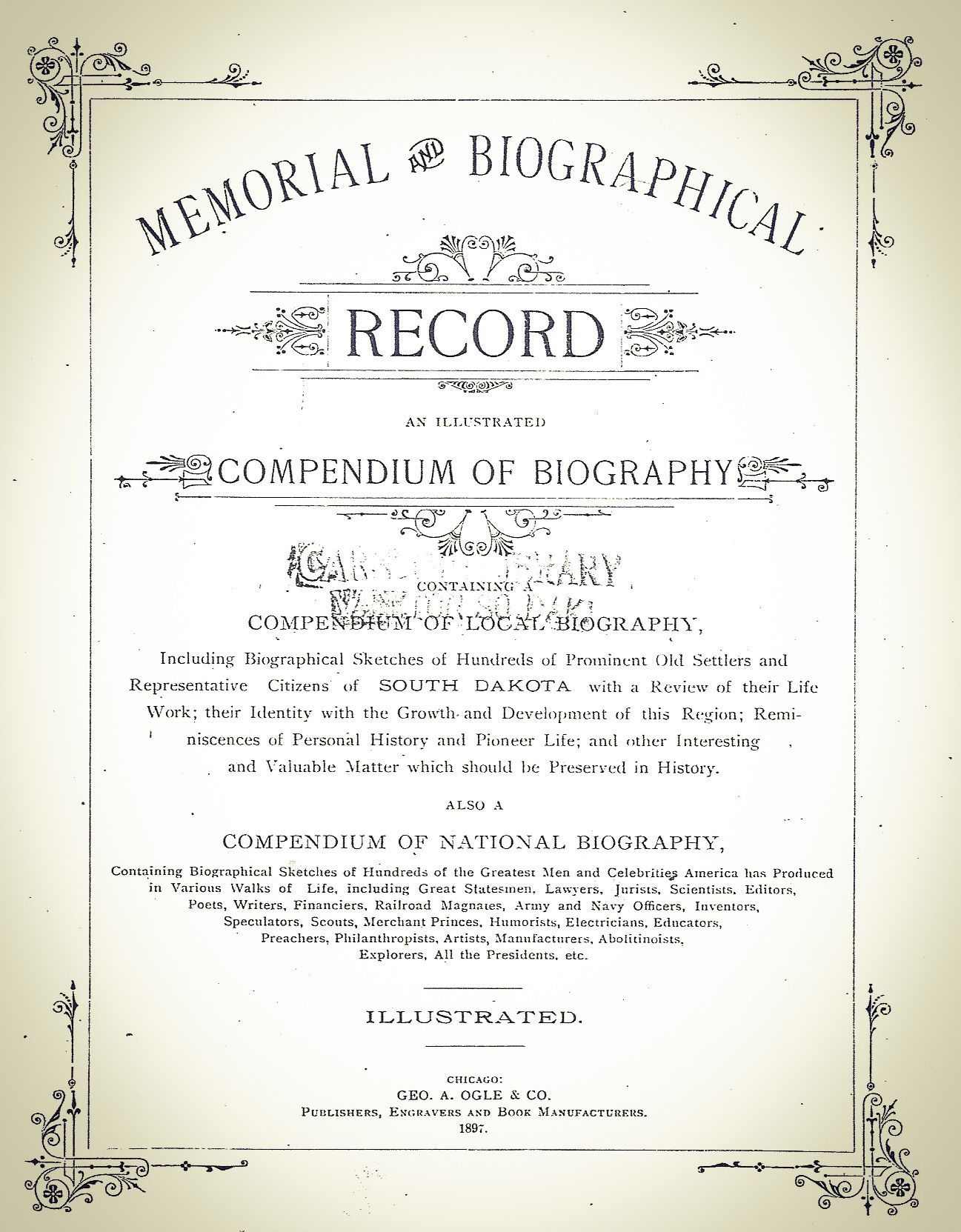
Mining was magnificent for the Adkins Family for a while. Places like Cedar Creek and Alder Gulch were paying out. But by the mid 1870’s the boom in Montana was ending. Levi Adkins left in 1873.
Barney and Adelbert found a new kind of prospecting - selling wood to the riverboats! According to the Memorial and Biographical Record of Citizens in South Dakota (published in 1897) they were at Judith Landing in 1877 - on the Missouri where they started a wood yard. They stayed there for four years accumulating a tidy sum of money.
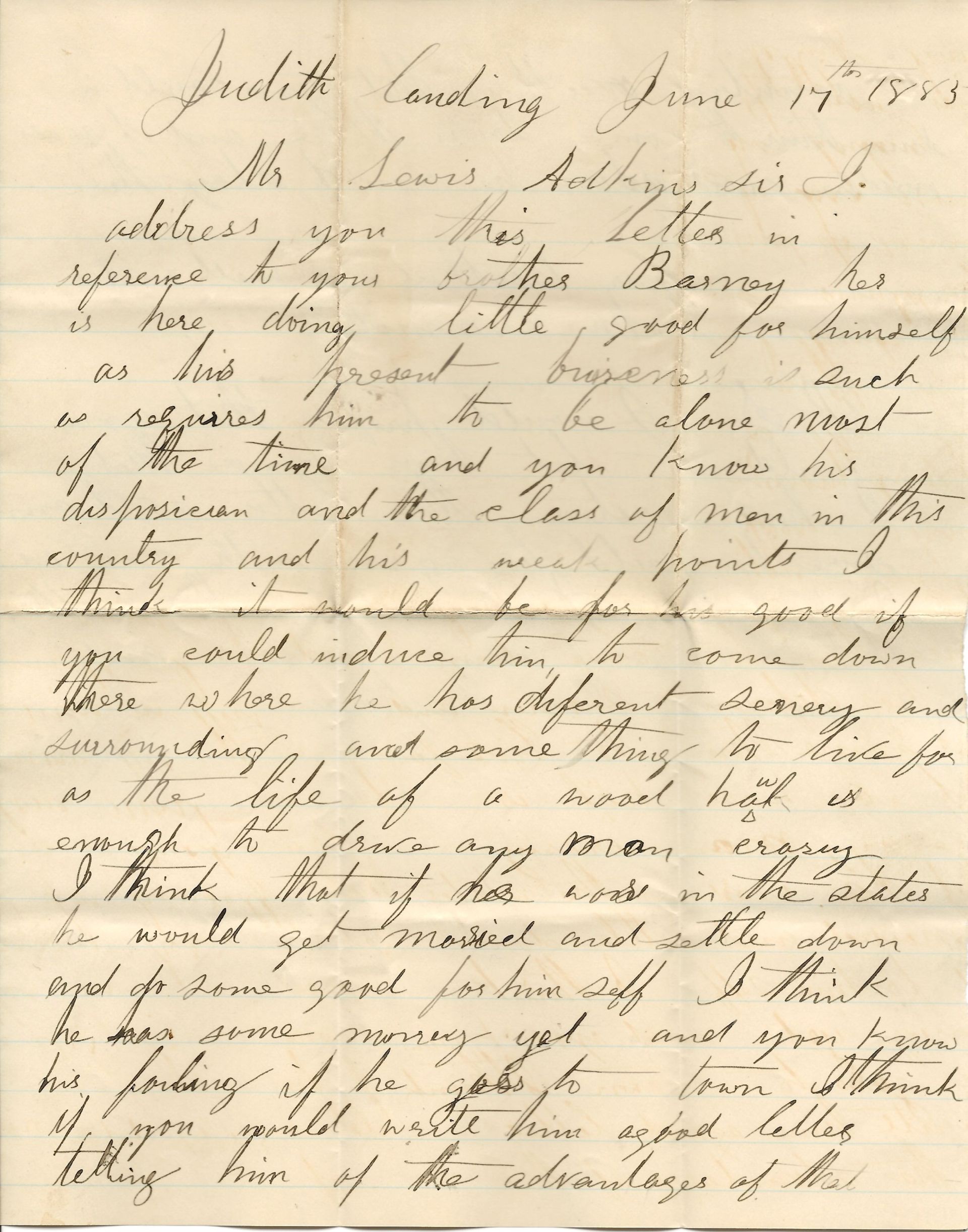
On June 17 a friend of Barney’s, John Emmit writes to Del: “Sir, I address this letter in reference to your brother, Barney. He is here doing little good for himself as his present business is such as requires him to be alone most of the time and you know his disposition…. I think it would be good if you could induce him to come down there where there is different scenery and something to live for as the life of a wood hawk is enough to drive any man crazy.”
June 16: “Sit down to write you a few letters as I am corralled indoors. We are having the worst rain storm I ever saw in the country. The river is out of its banks and still rising. I have some wood I have been watching, Weather is too bad to look after it, would be useless anyway. Everything got wet in the house. Laid in wet blankets for a week, feel about 75 years old, and look just about that.”
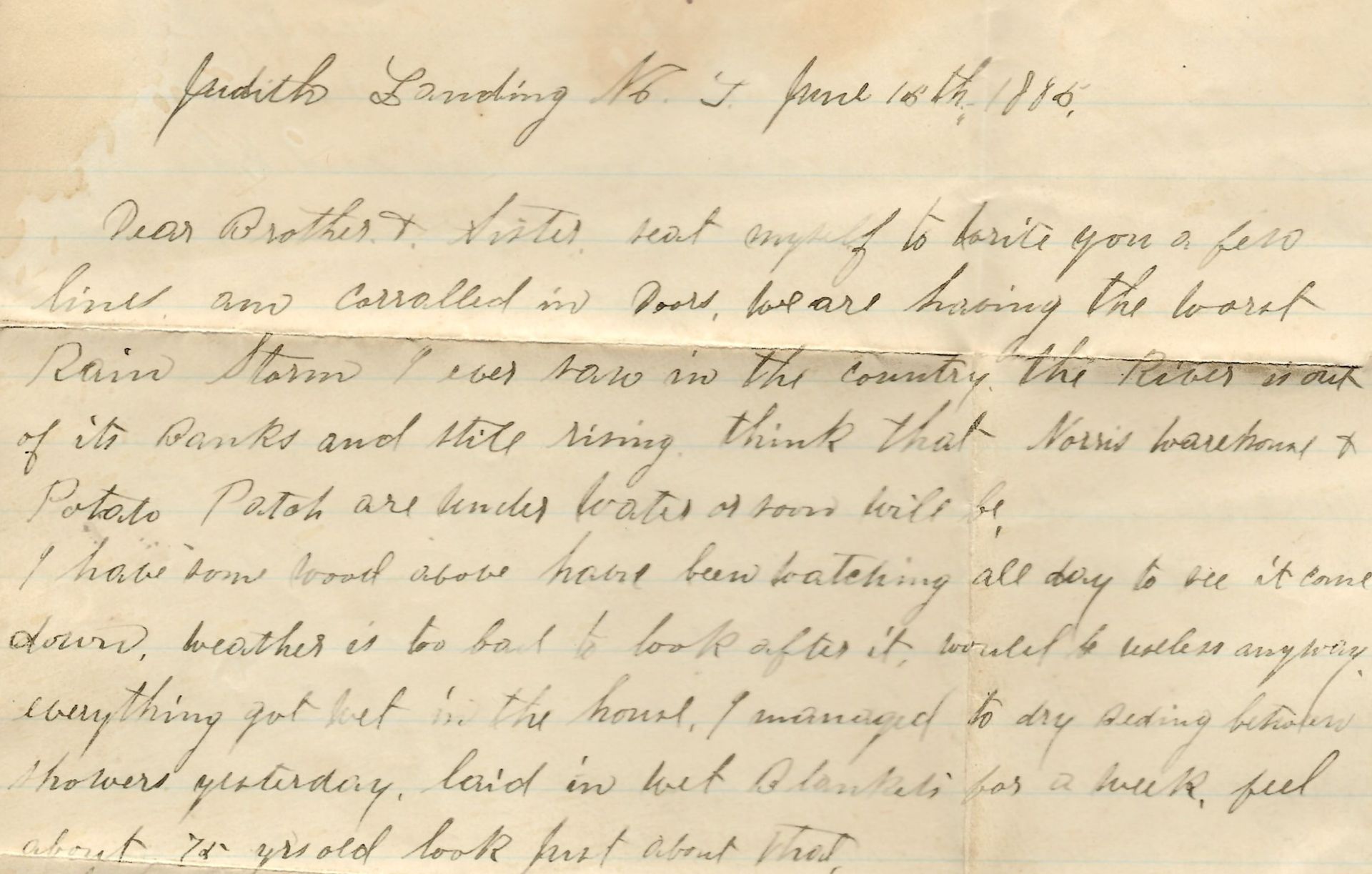

Being a wood hawk was a hard and lonely existence. Barney writes a series of letters to his brother Adelbert in 1885.
March 9: “Our winter seems to be broke here though we are apt to have another storm. Not much snow, but severe cold weather. 60 below at places. I have but little news now to write in but little doing and no excitement of any kind at present. Cannot send a photograph, impossible to get it within 250 miles.”

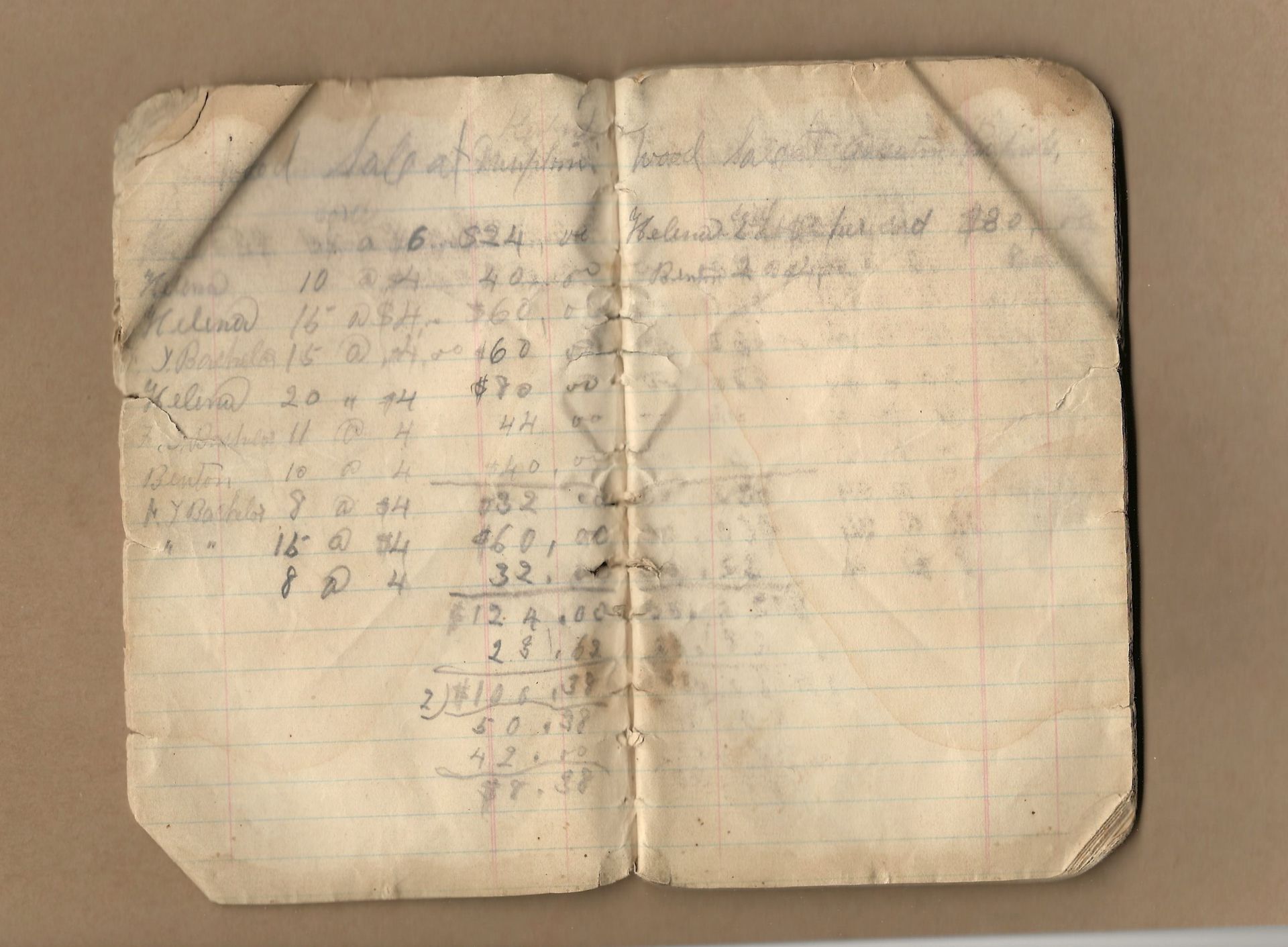
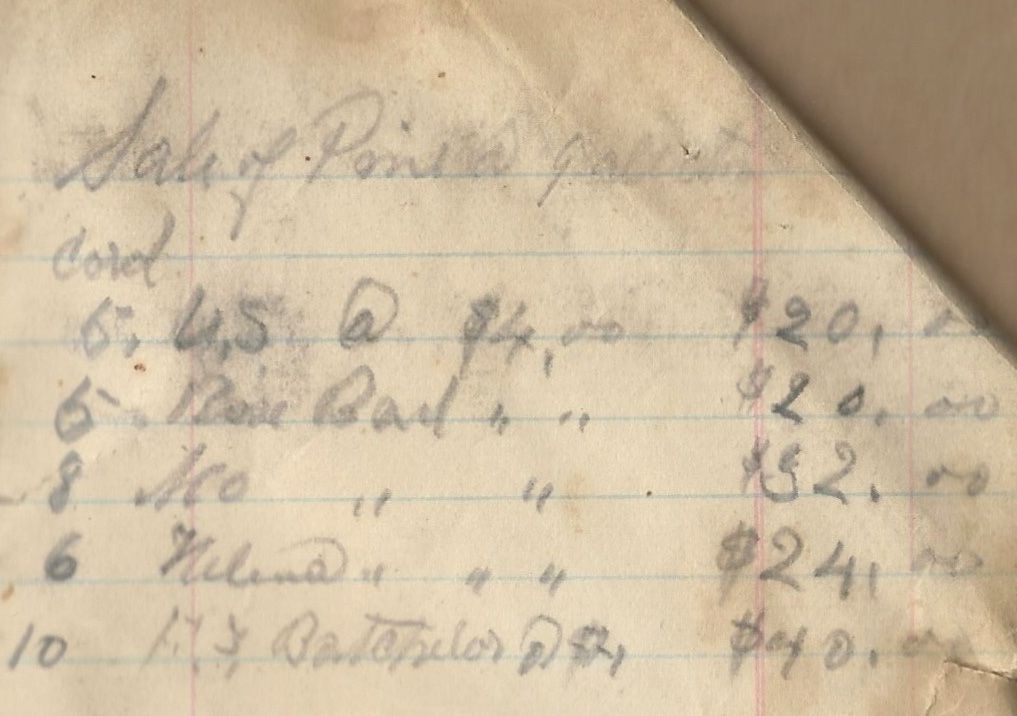
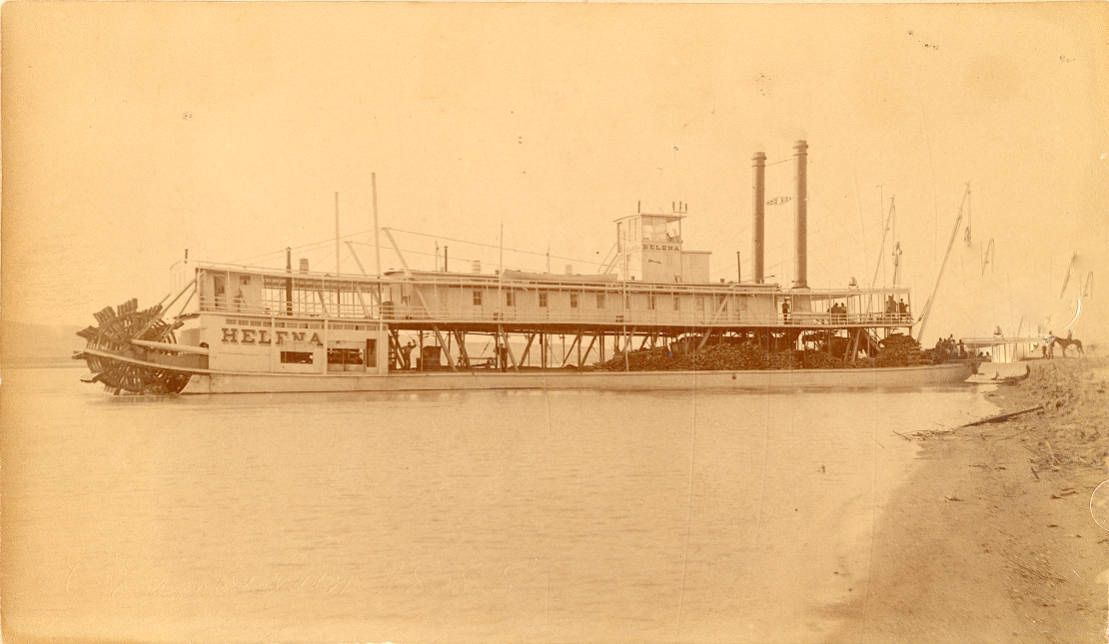
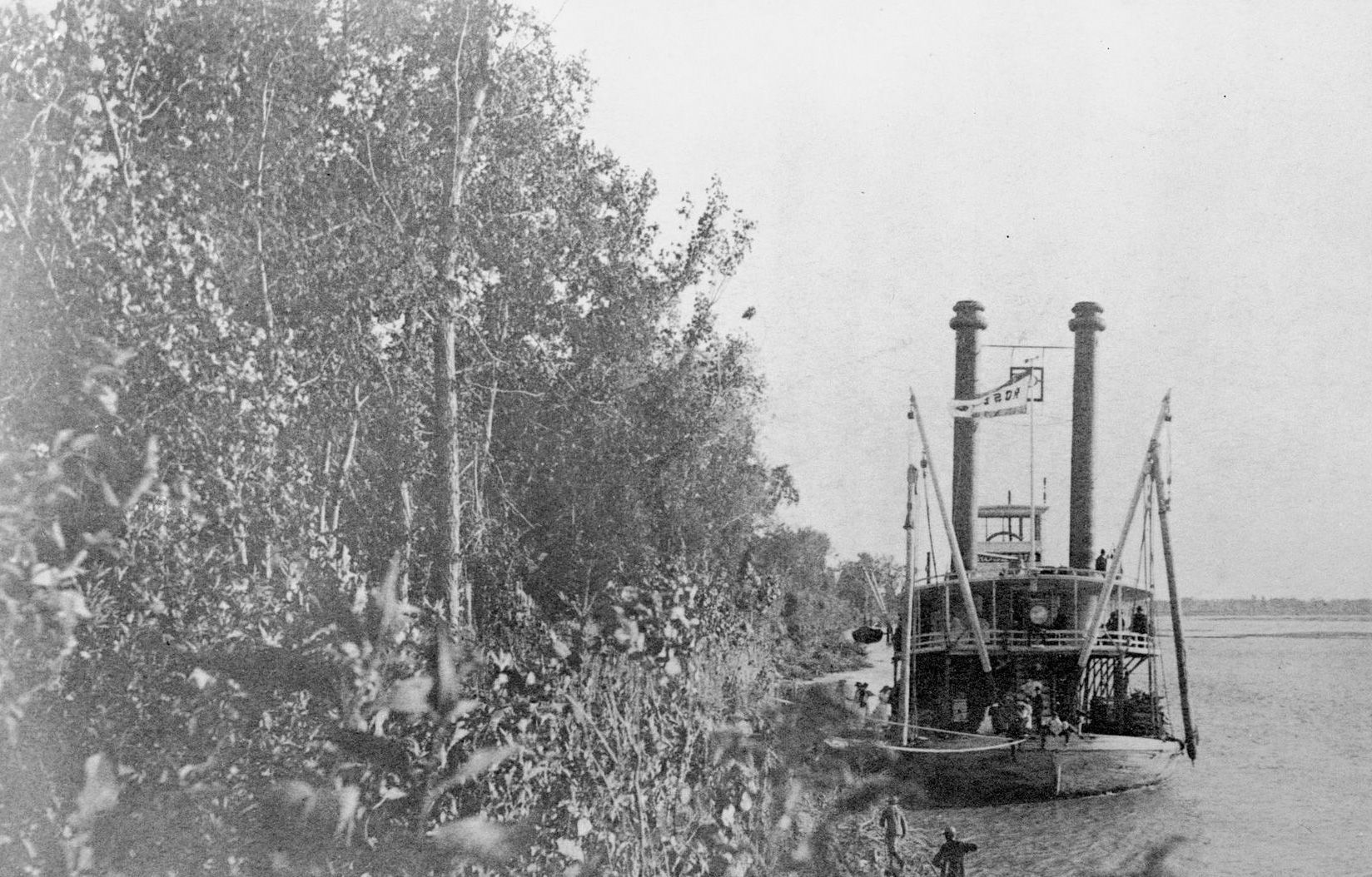

Steamboat Helena at Brule City. H.J. King Collection, South Dakota Historical Society Archives. Circa, 1870s
Steamboat Rosebud docked by a cottonwood stand. University of Wisconsin Collection. Circa, 1880s
Steamboat F.Y. Batchelor. H.J. King Collection, South Dakota Historical Society Collection. Circa,1880s
The break in Barney’s lonely existence came when the riverboats arrived at his place on Judith Landing, Montana Territory. In his logbooks he listed them. And referred to some in his letters.

Gould was not the only riverboat Captain Barney knew. John Labarge captained the Steamer Chippewa, then the Yellowstone and others to open the waters to Montana
In a letter Barney writes: "Captain Labarge said he thought the “Muddy” had got me when he couldn’t find me last fall!”
Later in 1885: “Captain Labarge fell dead in the pilot house of Steamboat Helena a few days ago. The boat is now due here.”
From the Daily Press and Dakotan
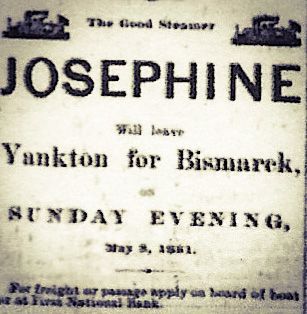
Steamboat Josephine, H.J. King Collection, South Dakota Historical Society Archives. Circa, 1880s
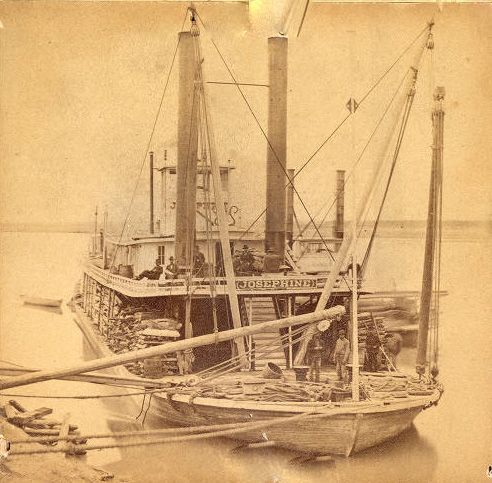
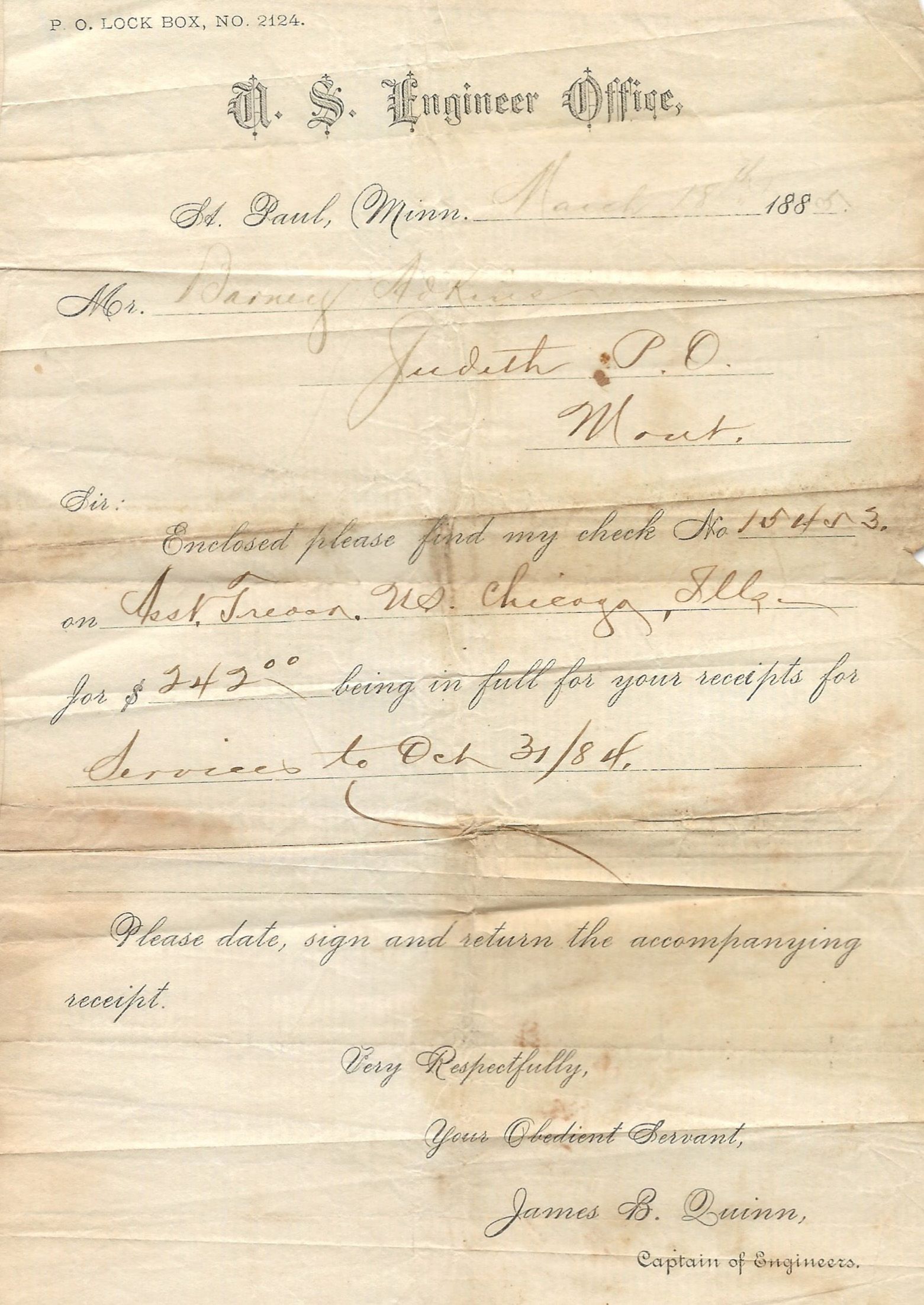
This gave him the opportunity to visit his friend, Capt. William Gould. Gould had captained the Steamer Josephine and Barney had sold wood to him.

Another break came in 1887 when Barney “came down” the river to Yankton. His purpose was to investigate a piece of property Adelbert was about to purchase near Milltown. He stayed at the Germania House and wrote Adelbert from there. Barney thought Yankton a lovely place.
Germania House, courtesy of the Meade Museum, Yankton, South Dakota. Circa, 1872

By 1890, the heyday of the riverboats was passing. Railroads were taking over the transportation of goods. Many riverboats had already been taken by the treacherous Missouri.
In the Annual Report of the Missouri River Commission for the fiscal year ending in 1897, a compilation shows the loss of 295 steamboats on the Missouri river from the beginning of steamboat navigation to the date of the report. Twenty were lost in the present state of South Dakota.
By that time Barney quit wood-hawking. He tried homesteading for a while. But the river took him too.
He drowned in Montana in 1892.
Steamboat wreckage found in the Missouri, this century. A National Park Service photo.
Engraving from the Nebraska Historical Society
Special thanks to:
Megan Hansen, Mead Museum, Yankton, South Dakota
The Yankton Public Library
Marianne Girten and Noel Hamiel, great great grandchildren of H.J. King, a Missouri Riverboat Pioneer
Leo Woster
Ken Stewart
Diane Graber
Follow Us
All Rights Reserved | Adkins, Mattas, Mize, History Museum
Edited by Jessica Kay Brown